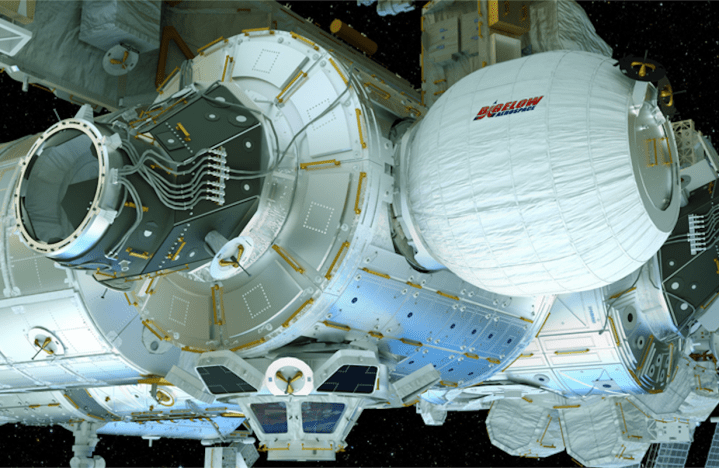
To some extent, you really could think of them as high-tech tents. But the contraptions developed by Bigelow Aerospace and its founder Robert Bigelow are far more advanced than anything you’d find on the Appalachian Trail. Rather, Bigelow’s Expandable Activity Module, or BEAM, is a compact, portable structure that expands to four times its size.
Bigelow Aerospace sent a prototype of its expandable habitat to the great beyond and attached it to the International Space Station (an effort that cost $17.8 million). When it’s inflated, BEAM will essentially give the ISS another bedroom for humans to work, sleep, and live in. For the next two years, scientists and astronauts will monitor BEAM and see how it holds up to the elements of space.
Bigelow has revealed little about the details behind BEAM’s construction, saying only that it’s composed of Kevlar-esque material and that it’s really, really strong. “It’s a multiple-layered structure, and when something hits the first outer layer, it fractures and breaks up,” he told CNN. But NASA isn’t just taking his word for it — rather, inhabitants of the ISS will go into BEAM, the first expandable space habitat, once every month to check things out and determine whether or not such a habitat could be used in future space travel and exploration.
“We would like to be part of the process of establishing a lunar station and other kinds of space outposts — maybe someday helping to support Mars ambitions,” Bigelow said.
Developing these sorts of habitats will be crucial to the future of international space programs. “To date we’ve thought about habitats as stations,” Jason Crusan, NASA’s director for Advanced Exploration Systems Division, told CNN. But that will soon change, he added. “All of our habitats in the future … will also have propulsion with the engines to take us to our destinations.” This is why NASA isn’t putting all its eggs in Bigelow’s basket — indeed, the agency is slated to invest $65 million in commercial industries over the next year or so, and already has contracts with major players like Boeing, Lockheed Martin, and Orbital ATK, to aid in the development of space homes.
So don’t get too comfortable here on Earth, friends. It may only be a matter of time before we’re floating around in expandable habitats miles above the atmosphere.


